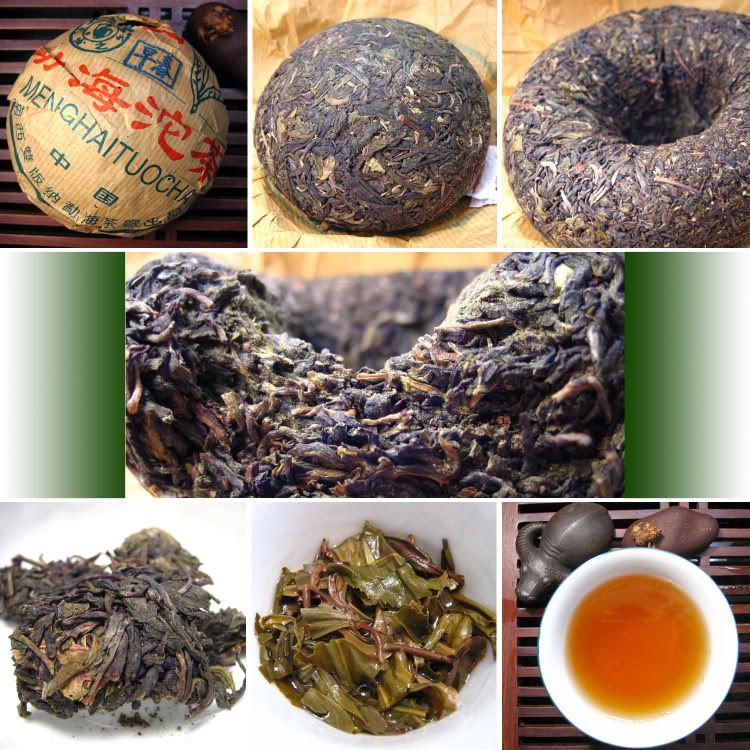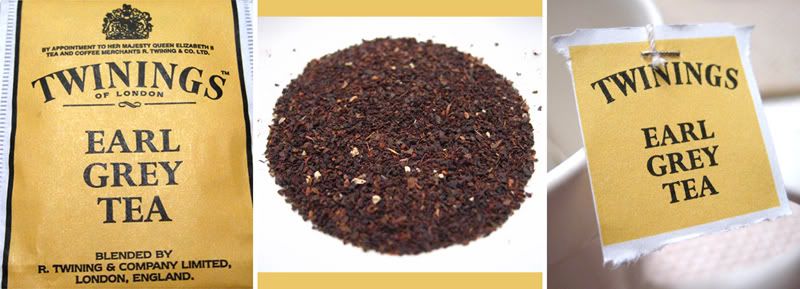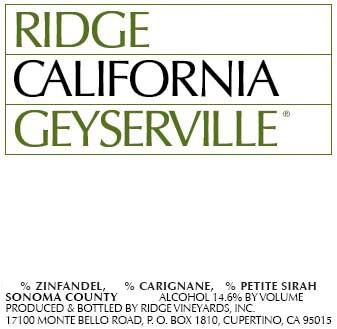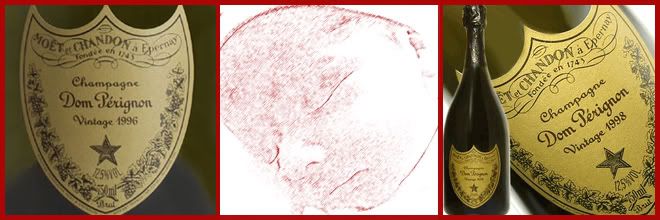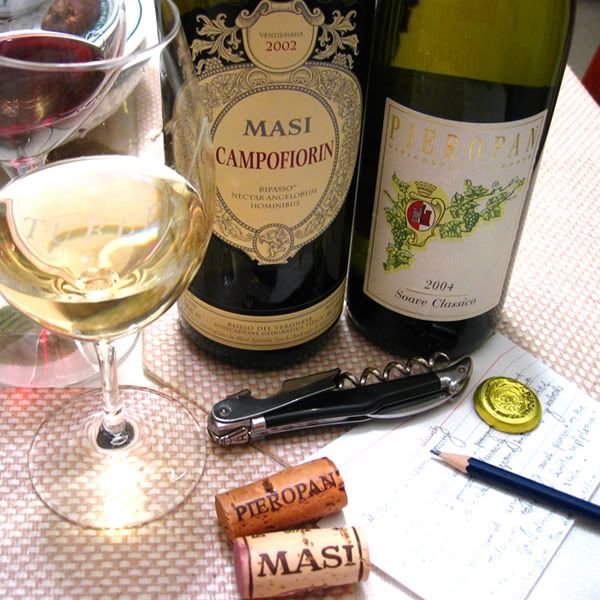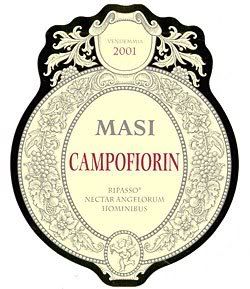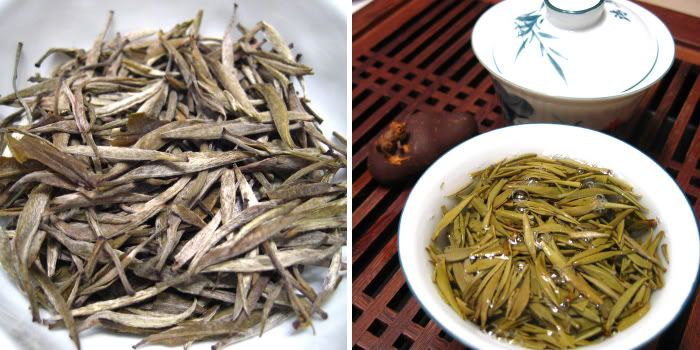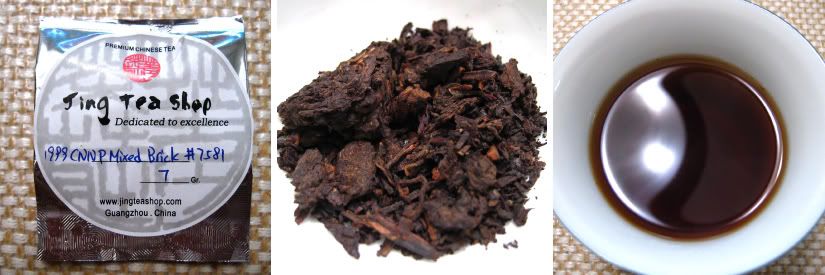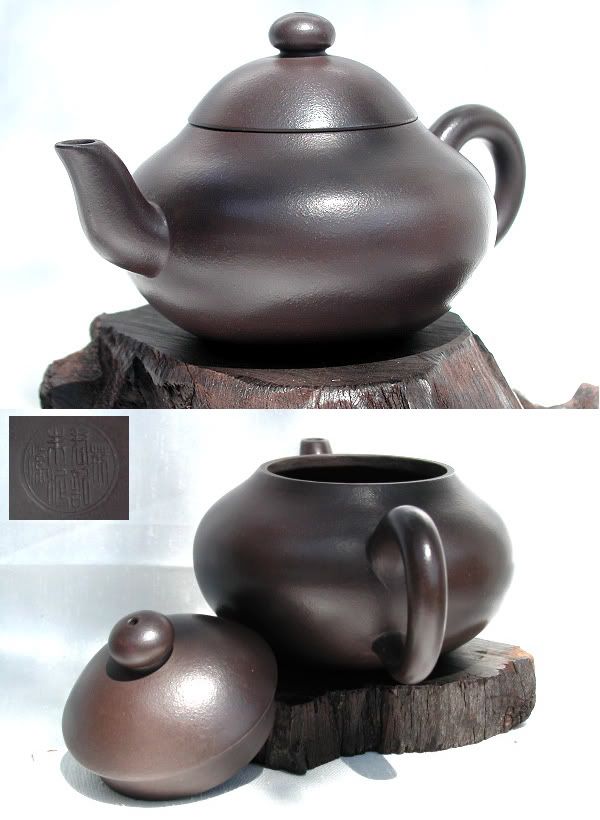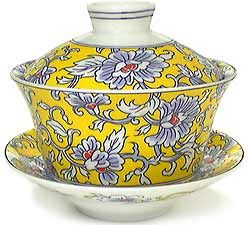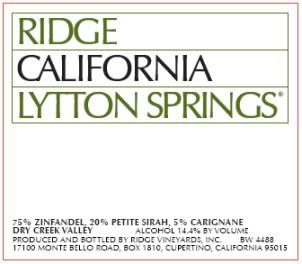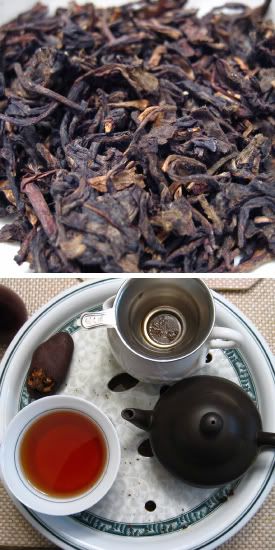When I was in Guangzhou a few months ago visiting my relatives, I had the chance to explore the tea shops in that big, polluted ancient city (this was before I knew the existence of Jing Tea Shop, otherwise I would have looked for it and Sebastien). One particular day, while shopping for some gifts at one of the mega shopping malls in the Tian He area, I came across a few posh looking tea shops standing next to each other. One of the shops offered me to taste this 21-year old raw loose pu-erh, which I found quite appealing in color, smell and taste.
According to the polite salesperson, this loose raw pu-erh had been stored for 2 decades in Hong Kong. Looking closely at the external packaging recently at home in LA, I realized that it has the emblems of Best Tea House and Chan’s Tea House. Both of those emblems, as you can see from the picture above, refer to the same well-known Hong Kong proprietor / tea guru that Marshaln and THSU raved about.
The sticker price of this 21-year old pu-erh was RMB 1600 (roughly USD 200) for the 500gr package, though due to other purchases I made, they gave me a 20% discount. Relatively speaking, the price is quite alright for such a well-stored old tea, although I can never know for sure.
Tasting Note
Brewing method: 200 ml Yixing, 99/100’ Celsius, flash rinse twice, 2m rest, then 5s, 10s, 15s, 20s, 30s, 45s, 1m… (Good for 9 brews, more or less)
Dry leaves appearance: dark red and blackish in color, small whole leaves and some stalks
Dry leaves' nose: woody and sweet
Wet leaves appearance: dark red and black mostly
Wet leaves' nose: woody and floral, with some amount of camphor quality on the 3rd infusion and thereafter
Color: Deep red/brown with oily appearance and the yellow/orange bao goang (halo) around the rim of my cup
Taste: Mellow, smooth and sweet. More “cha-qi” is to be desired. Not overly complex, making this a relaxing tea to drink in the evening after a long hard day. Sweet aftertaste that lasts a long time
Overall impression: This tea may not be the epitome of complexity and grace for an old tea, though it’s quite pleasant in casual settings. Food friendly.
3 stars (g)
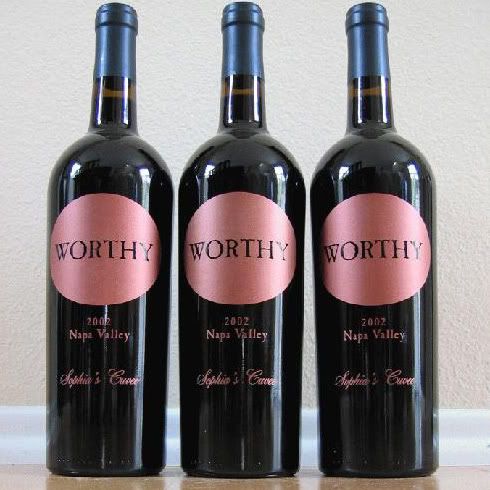 $30/750ml. A Bodeaux blend of cabernet sauvignon, merlot and petite verdot.
$30/750ml. A Bodeaux blend of cabernet sauvignon, merlot and petite verdot.



